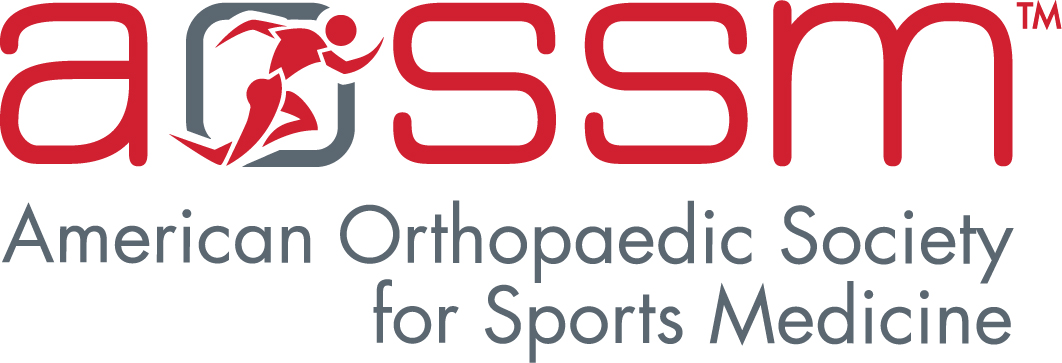News Release For Immediate Release
For more information, contact: Lisa Doty
Director of Communications
(847) 292-4900
toll free (877) 321-3500
[email protected]
Medical Specialists Reach Consensus and Release Recommendations For Treatment and Management of Concussion in Sports
September 15, 1999 -- Rosemont, IL -- Team physicians, coaches, athletic trainers and other health professionals working with athletes now have well-defined parameters for treating and managing athletes with concussions. One concern has been the early return of an athlete to play when the brain needs a longer time to recover. Another serious issue is the cumulative effects of repeat concussions.
The American Orthopaedic Society for Sports Medicine, the American Academy of Pediatrics, the American Osteopathic Academy of Sports Medicine, the National Academy of Neuropsychology and International Neuropsychological Society and the American Academy of Orthopaedic Surgeons, have reached a consensus on the treatment and management of concussions in sports, and identified specific guidelines for the safe return to play of an athlete who has sustained a concussion.
A concussion is any alteration in cerebral function caused by a force that is transmitted to the brain. A form of traumatic brain injury, a concussion results in one or more of the following acute signs or symptoms: a brief loss of consciousness, light-headedness, vertigo, cognitive and memory dysfunction, tinnitus, blurred vision, difficulty concentrating, amnesia, headache, nausea, vomiting, photophobia or balance disturbance.
The group's recommendations, the result of 18 months of collaboration, are published in a monograph, "Concussion in Sports," in the September/October 1999 issue of the American Journal of Sports Medicine, the scientific journal of the American Orthopaedic Society for Sports Medicine (AOSSM).
"This is an educational document that will be helpful to those who are in the trenches working with athletes," said Ed Wojtys, MD, lead author of the monograph and professor, Department of Surgery, University of Michigan at Ann Arbor. "It provides medical practitioners with guidelines that should improve the care of athletes."
Over the years there has been significant debate on the signs and symptoms of a concussion, as well as the treatment and monitoring of these injuries. While many concussions are minor, some brain injuries can be quite serious, if not fatal. Clinicians have been split on how soon an athlete can safely return to competition following a concussion and what the risks are upon their return.
Concussions can happen in any sport, but are most often noticed in hockey and football. In recent years, several high-profile football and hockey players have retired because of the effects of multiple concussions.
In December 1997, Dr. Wojtys chaired a "Concussion in Sports" Workshop, sponsored by the AOSSM, during which a diverse group of representatives from 14 organizations, ranging from the American Academy of Neurology to the National Hockey League met to address the complex and controversial topic of concussion management. The group studied existing scientific literature on brain injuries and also focused on how to evaluate an athlete with a concussion, the effectiveness of current assessment tools, how to treat the injury, the recovery period and when an athlete can safely return to play. The newly published monograph is an outgrowth of that meeting and subsequent dialogue and debate among the groups during the past 18 months and provides a balanced approach to the key issues surrounding concussions in athletes.
"One of our recommendations is that all concussions be treated by a physician. Some athletes with concussions never see a doctor," said Dr. Wojtys, football team physician at the University of Michigan. "Our goal is to increase recognition of potential problems by all those taking care of athletes."
Here is a summary of the nine recommendations:
1. Every athlete with a concussion should be evaluated by a physician.
2. Loss of consciousness precludes return to play that day.
3. Persistence of (longer than 15 minutes) or delayed onset of any symptoms precludes return to play that day
4. Any deterioration in physical or mental status after the initial trauma warrants immediate transport to an emergency facility with neurological/neurosurgical services available.
5. When prolonged symptoms (greater than 15 minutes) are experienced after a concussion, great care must be exercised in returning an athlete without symptoms to practice or competition.
6. Newer tools, such as balance testing, cannot be recommended at this time for clinical decision-making following a concussion; however, they can be used to further data collection.
7. Further study is needed of the Standardized Assessment of Concussion (SAC) as part of the initial evaluation of a concussed athlete so as to gain experience with its use. The SAC is a five-minute test administered by a non-healthcare professional to an athlete following an injury to measure orientation, immediate memory, concentration and delayed recall.
8. Continued clinical and basic science research of sports-induced concussions is needed across athletic organizations from junior high age to professional levels.
9. There is a need to set up databases on all athletes with concussions to help assess the risk of future injury and further difficulties.
The American Orthopaedic Society for Sports Medicine (AOSSM)- a world leader in sports medicine education, research, communication and fellowship-- is a national organization of orthopaedic sports medicine specialists, including national and international sports medicine leaders. The AOSSM works closely with many other sports medicine specialists and clinicians, including family physicians, emergency physicians, pediatricians, athletic trainers and physical therapists, to improve the identification, prevention, treatment and rehabilitation of sports injuries.
-- ## --
